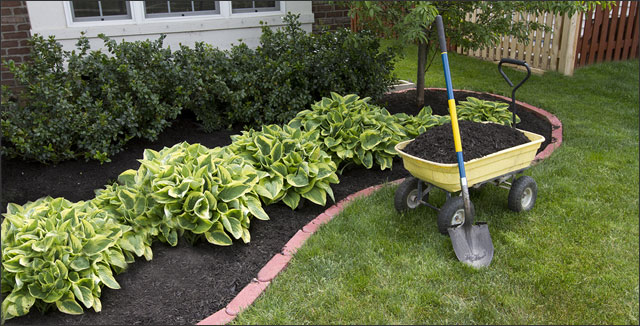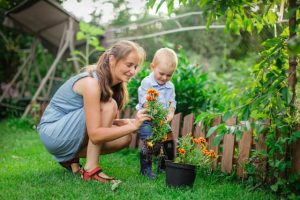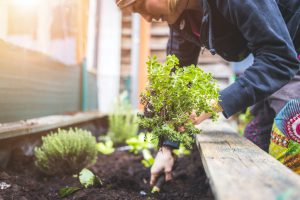Gardening can be a rewarding hobby, but it requires time and effort to maintain a healthy garden. For those who don’t have the time or patience for a high-maintenance garden, there are a few low-maintenance options
Why a low-maintenance garden is ideal
A low-maintenance garden is ideal for busy people who don’t have the time to spend hours every week tending to their plants. There are a few things you can do to create a low-maintenance garden
First, choose plants that are native to your area. These plants will be able to thrive with minimal care. Second, use mulch in your garden beds. This will help reduce weed growth and retain moisture in the soil. Finally, consider using drought-tolerant plants. These plants require less water, so you won’t have to water them as often.
By following these tips, you can create a beautiful garden that requires very little maintenance.
1: Plan your garden before you plant
When it comes to having a low-maintenance garden, one of the best things you can do is plan ahead. By taking the time to map out your garden before you plant, you can avoid a lot of potential problems down the road.
Think about what kind of plants you want to include in your garden and where they will be best suited. Do you have a sunny spot for flowers or a shady area that would be perfect for ferns? Once you know what you want to grow, research which varieties are known for being low-maintenance.
Once you have your plan in place, stick to it as much as possible. resist the urge to add new plants or make changes on a whim – every time you do, it will make your garden that much harder to take care of in the long run.
2: Use native plants
If you’re looking to save time and money in your garden, one of the best things you can do is to use native plants. Native plants are those that occur naturally in your area, and they’re adapted to local conditions like climate, soil type, and rainfall. That means they require less water, fertiliser, and pest control than non-native plants.
There are many beautiful native plants available, so you don’t have to sacrifice aesthetics for practicality. In fact, using native plants can actually be better for the local ecosystem because they provide food and habitat for native wildlife. So not only will you have a low-maintenance garden, but you’ll also be doing your part to help the environment.
3: Group plants together based on water needs
When grouping plants together in your garden, be sure to consider their water needs. Plants with similar water needs can be grouped together, which will make watering easier and more efficient. For example, group together plants that require frequent watering, such as annuals and vegetables. These can be placed near a hose or spigot for easy access. Perennials and shrubs that have moderate water needs can be grouped together in a different area of the garden. And finally, cacti and other succulents that have low water needs can be grouped together in yet another area. By grouping plants with similar water needs together, you’ll save time and effort when it comes to watering your garden.
4: Use mulch to retain moisture and suppress weeds
Mulch can be an extremely effective tool in the garden, both for retaining moisture and suppressing weeds. A thick layer of mulch will help to keep the soil beneath it moist, which is ideal for plants that require consistent watering. Mulch will also prevent weed seeds from germinating, as well as smothering existing weeds.
Organic mulches, such as wood chips or bark, will break down over time and add nutrients to the soil. Inorganic mulches, such as landscape fabric or black plastic, will last longer but need to be replaced periodically. Whichever type of mulch you choose, make sure to apply it thickly (3-4 inches is ideal) and replenish it regularly to maintain its efficacy.
5: Use raised beds or containers
If you want to reduce the amount of time you spend maintaining your garden, consider using raised beds or containers. With raised beds, you won’t have to worry about weeds as much, and the soil will warm up more quickly in the spring. Containers are also a great option if you don’t have a lot of space. You can move them around to get the best light and water them more easily than if they were in the ground.
A low-maintenance garden is possible with some planning
A ow-maintenance garden is possible with some planning. By selecting the right plants and using mulch, you can create a garden that will look great with minimal effort.
The key to a low-maintenance garden is choosing the right plants. Look for plants that are native to your area and require little water. If you live in an area with hot summers, choose plants that are drought-tolerant. You can also select plants that don’t need to be deadheaded or pruned regularly.
Mulch is another important element of a low-maintenance garden. Mulch helps prevent weeds, retains moisture, and keeps the soil cool in summer. Be sure to replenish your mulch every year to keep your garden looking its best.
A low-maintenance garden requires less work than a traditional garden, but there are still some things you need to do to keep it healthy and looking its best. Here are some tips for creating and maintaining a low-maintenance garden:
- Choose the right plants. Look for plants that are native to your area or that are known to be low-maintenance. Avoid delicate plants that require a lot of care, and choose tough plants that can withstand harsh conditions.
- Prepare your soil.When preparing your soil for a low-maintenance garden, there are a few things to keep in mind. First, you’ll want to make sure the soil is loose and well-drained. This will help reduce the amount of watering and weeding that you’ll need to do. Second, you’ll want to add organic matter to the soil. This can be in the form of compost, manure, or even just fallen leaves. This will help improve the quality of the soil and make it more fertile. Finally, you’ll want to make sure the soil is level. This will help prevent drainage problems and ensure that your plants get evenly distributed water.
A low-maintenance garden can be a reality with a little bit of planning and forethought. By choosing the right plants and using the proper techniques, you can have a beautiful garden that will thrive with minimal care. Follow these tips to create your own low-maintenance oasis.











Be First to Comment